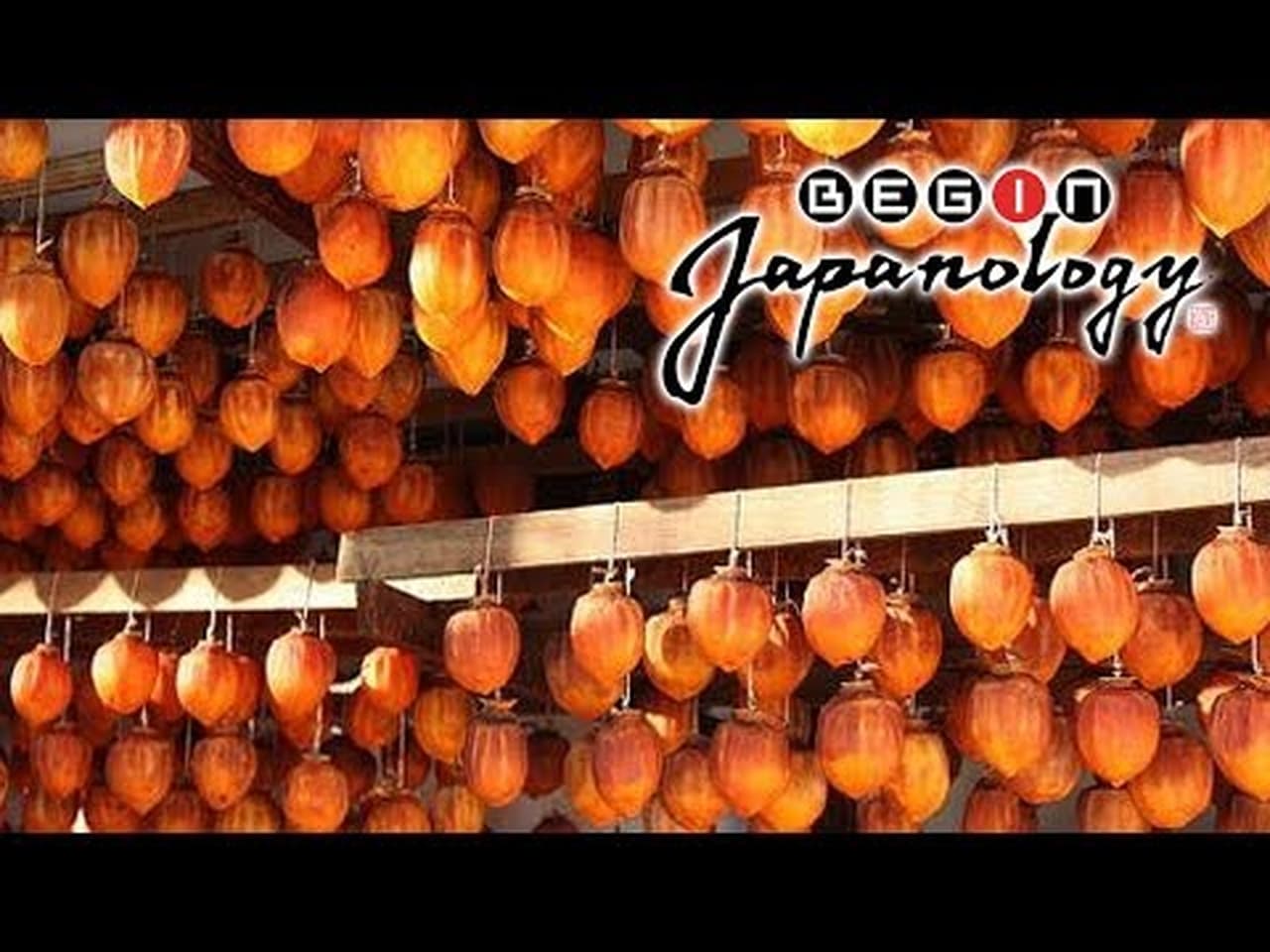Begin Japanology
(2007)Streaming Episode Guide

Season 7
Squid
Episode 10 - 3-20-2014


Pianos
Episode 9 - 3-13-2014


Railways
Episode 8 - 3-06-2014


Japanophiles - Rogier Uitenboogaart
Episode 7 - 2-27-2014


Japanophiles - Chris Hart
Episode 6 - 2-20-2014


Japanophiles - Nancy Singleton Hachisu
Episode 5 - 2-13-2014


K-cars
Episode 4 - 1-30-2014


Ise Jingu
Episode 3 - 1-23-2014


Nighttime Scenery
Episode 2 - 1-16-2014


Persimmons
Episode 1 - 1-09-2014



Season 6
Pets
Episode 40 - 12-19-2013


Conveyor Belt Sushi
Episode 39 - 12-12-2013


Parties and Gatherings
Episode 38 - 12-05-2013


Buses
Episode 37 - 11-21-2013


Ukiyo-e
Episode 36 - 11-14-2013


Makeup
Episode 35 - 11-07-2013


Grapes
Episode 34 - 10-24-2013


Characters and Mascots
Episode 33 - 10-17-2013


Remote Islands
Episode 32 - 10-10-2013


Women's Nylons
Episode 31 - 10-03-2013


Used Books
Episode 30 - 9-19-2013


Convenience Stores
Episode 29 - 9-12-2013


Shakuhachi
Episode 28 - 9-05-2013


Japanophiles - Kenny Omega
Episode 27 - 8-15-2013


Japanophiles - Karl Bengs
Episode 26 - 8-08-2013


Japanophiles - Mike Harris
Episode 25 - 8-01-2013


Beer
Episode 24 - 7-18-2013


Expressways
Episode 23 - 7-11-2013


Lake Biwa
Episode 22 - 7-04-2013


Television
Episode 21 - 6-27-2013


Calculators
Episode 20 - 6-13-2013


Strawberries
Episode 19 - 5-30-2013


Pro Wrestling
Episode 18 - 5-23-2013


Parcel Delivery
Episode 17 - 5-16-2013


Pine Trees
Episode 16 - 5-09-2013


Bread
Episode 15 - 5-02-2013


Stationery
Episode 14 - 4-25-2013


Burial Mounds
Episode 13 - 4-18-2013


Rice Cookers
Episode 12 - 4-11-2013


Uniforms
Episode 11 - 4-04-2013


Wagyu
Episode 10 - 3-21-2013


Storehouses
Episode 9 - 3-14-2013


Ume Plums
Episode 8 - 3-07-2013


Japanophiles - Yasokichi Konishiki
Episode 7 - 2-21-2013


Japanophiles - Ernst Seiler
Episode 6 - 2-14-2013


Japanophiles - Azby Brown
Episode 5 - 2-07-2013


Small Factories
Episode 4 - 1-31-2013


Enka
Episode 3 - 1-24-2013


Bathroom Scales
Episode 2 - 1-17-2013


Sumo
Episode 1 - 1-10-2013



Season 5
Gift-giving
Episode 41 - 12-20-2012


Satsuma Mandarins
Episode 40 - 12-13-2012


Scissors
Episode 39 - 12-06-2012


Vending Machines
Episode 38 - 11-22-2012


Mushrooms
Episode 37 - 11-15-2012


Name Seals
Episode 36 - 11-08-2012


Potatoes, Taros, and Yams
Episode 35 - 11-01-2012


Tokyo Bay
Episode 34 - 10-18-2012


Tokyo Skytree
Episode 33 - 10-11-2012


Tokyo Station
Episode 32 - 10-04-2012


Abalone
Episode 31 - 9-20-2012


Crested Ibises
Episode 30 - 9-13-2012


Shamisen
Episode 29 - 9-06-2012


Japanophiles - Euan Craig
Episode 28 - 8-30-2012


Japanophiles - Dave Spector
Episode 27 - 8-23-2012


Japanophiles - Adam Booth
Episode 26 - 8-16-2012


Planetariums
Episode 25 - 7-19-2012


High School Baseball
Episode 24 - 7-12-2012


Moss
Episode 23 - 7-05-2012


Dolls
Episode 22 - 6-21-2012


Confectionery
Episode 21 - 6-14-2012


Aquariums
Episode 20 - 6-07-2012


Kimonos
Episode 19 - 5-24-2012


Department Stores
Episode 18 - 5-17-2012


Regional Fast Food
Episode 17 - 5-10-2012


Shikoku Pilgrimage
Episode 16 - 5-03-2012


Massage Chairs
Episode 15 - 4-26-2012


Horses
Episode 14 - 4-19-2012


Wild Vegetables
Episode 13 - 4-12-2012


Kabuki
Episode 12 - 4-05-2012


Japanophiles - Philip Harper
Episode 11 - 3-29-2012


Japanophiles - Art Lee
Episode 10 - 3-15-2012


Japanophiles - Richard Emmert
Episode 9 - 3-08-2012


Japanophiles - Dhugal Lindsay
Episode 8 - 3-01-2012


Woods & Forests
Episode 7 - 2-23-2012


Excavators
Episode 6 - 2-16-2012


Ikebana
Episode 5 - 2-09-2012


Hot Water Bottles and Pocket Warmers
Episode 4 - 2-02-2012


Cafes
Episode 3 - 1-26-2012


Batteries
Episode 2 - 1-19-2012


Ekiden
Episode 1 - 1-12-2012



Season 4
Chickens and Eggs
Episode 43 - 12-22-2011


Shopping Streets
Episode 42 - 12-15-2011


Red Sea Bream
Episode 41 - 12-08-2011


Holidays
Episode 40 - 12-01-2011


Karaoke
Episode 39 - 11-24-2011


Japanophiles - Matt Alt
Episode 38 - 11-17-2011


Japanophiles - Noelke Muho
Episode 37 - 11-10-2011


Japanophiles - Bruce Huebner
Episode 36 - 11-03-2011


Shipbuilding
Episode 35 - 10-27-2011


Golf
Episode 34 - 10-20-2011


Rain
Episode 33 - 10-13-2011


Charcoal
Episode 32 - 10-06-2011


Seaweed
Episode 31 - 9-29-2011


Chusonji
Episode 30 - 9-15-2011


Bicycles
Episode 29 - 9-08-2011


Traditional Japanese Mathematics
Episode 28 - 9-01-2011


Insects
Episode 27 - 8-25-2011


Plastic Food Samples
Episode 26 - 8-18-2011


Japanophiles - Dorothy Feibleman
Episode 25 - 7-28-2011


Japanophiles - Stéphane Danton
Episode 24 - 7-21-2011


Japanophiles - Silvain Guignard
Episode 23 - 7-14-2011


Japanophiles - Ilan Yanizky
Episode 22 - 7-07-2011


Unagi Eel
Episode 21 - 6-30-2011


Motorcycles
Episode 20 - 6-23-2011


Lifts
Episode 19 - 6-16-2011


Toilets
Episode 18 - 6-09-2011


The Life of Hideko Maehata
Episode 17 - 6-02-2011


The Life of Kenzo Tange
Episode 16 - 5-26-2011


The Life of Osamu Dazai
Episode 15 - 5-19-2011


The Life of Taro Okamoto
Episode 14 - 5-12-2011


Judo
Episode 13 - 5-05-2011


Armour
Episode 12 - 4-28-2011


Fishing
Episode 11 - 4-21-2011


Kitchen Knives
Episode 10 - 4-14-2011


Cranes
Episode 9 - 4-07-2011


Sashimono Woodwork
Episode 8 - 3-10-2011


Pollen Allergy
Episode 7 - 3-03-2011


Snow
Episode 6 - 2-17-2011


Kagura Dances
Episode 5 - 2-10-2011


Haneda Airport
Episode 4 - 2-03-2011


Fugu Blowfish
Episode 3 - 1-27-2011


Watches and Clocks
Episode 2 - 1-20-2011


Mochi Rice Cake
Episode 1 - 1-13-2011



Season 3
Firefighting
Episode 43 - 12-16-2010


Volcanoes
Episode 42 - 12-09-2010


Nishikigoi
Episode 41 - 12-02-2010


Money
Episode 40 - 11-25-2010


Udon
Episode 39 - 11-18-2010


Hiragana
Episode 38 - 11-11-2010


Cameras
Episode 37 - 11-04-2010


Chrysanthemums
Episode 36 - 10-22-2010


Earthquakes
Episode 35 - 10-15-2010


Bridges
Episode 34 - 10-08-2010


Ekiben
Episode 33 - 9-24-2010


Radio Calisthenics
Episode 32 - 9-17-2010


Hotels
Episode 31 - 9-10-2010


Dams
Episode 30 - 9-03-2010


Curry
Episode 29 - 8-25-2010


Soybeans
Episode 28 - 8-20-2010


Silk
Episode 27 - 8-13-2010


Miniaturization
Episode 26 - 7-23-2010


Roof Tiles
Episode 25 - 7-16-2010


Home Appliances
Episode 24 - 7-09-2010


Hairstyles
Episode 23 - 7-02-2010


Subways
Episode 22 - 6-25-2010


Tempura
Episode 21 - 6-18-2010


Towns and Neighbourhoods
Episode 20 - 6-11-2010


Apartments and Condominiums
Episode 19 - 5-28-2010


Izakaya
Episode 18 - 5-21-2010


Women's Fashion Magazines
Episode 17 - 5-14-2010


Wasabi
Episode 16 - 4-30-2010


Robots
Episode 15 - 4-23-2010


Geiko and Maiko
Episode 14 - 4-16-2010


School Lunches
Episode 13 - 4-09-2010


Todaiji
Episode 12 - 4-02-2010


Pearl
Episode 11 - 3-19-2010


Fusuma
Episode 10 - 3-12-2010


Tuna
Episode 9 - 3-05-2010


Soy Sauce
Episode 8 - 2-26-2010


Monkey
Episode 7 - 2-19-2010


Footwear
Episode 6 - 2-12-2010


Light
Episode 5 - 2-05-2010


Cram School
Episode 4 - 1-29-2010


Taiko
Episode 3 - 1-22-2010


Karuta
Episode 2 - 1-15-2010


Sentou
Episode 1 - 1-08-2010



Season 2
Sword
Episode 41 - 12-18-2009


Nabe Cuisine
Episode 40 - 12-11-2009


Shogi
Episode 39 - 12-04-2009


Marriage
Episode 38 - 11-27-2009


Gagaku
Episode 37 - 11-20-2009


Shinkansen
Episode 36 - 11-13-2009


Festivals
Episode 35 - 11-06-2009


Shinto Shrine
Episode 34 - 10-30-2009


Rice
Episode 33 - 10-23-2009


Ramen
Episode 32 - 10-16-2009


Dogs
Episode 31 - 10-09-2009


Tsukemono
Episode 30 - 10-02-2009


Ink Brushes
Episode 29 - 9-25-2009


Rock and Stone
Episode 28 - 9-18-2009


Spinning Tops
Episode 27 - 9-11-2009


The Fragrances of Japan
Episode 26 - 9-04-2009


Kendo
Episode 25 - 8-29-2009


Satoyama
Episode 24 - 7-31-2009


Masks
Episode 23 - 7-24-2009


The Sounds of Japan
Episode 22 - 7-17-2009


Kaiseki Cuisine
Episode 21 - 7-10-2009


Folding Fan
Episode 20 - 6-19-2009


Imari Porcelain
Episode 19 - 6-05-2009


Origami
Episode 18 - 5-29-2009


Soba
Episode 17 - 5-22-2009


Tea Ceremony
Episode 16 - 5-15-2009


Traditional Folk Houses
Episode 15 - 5-08-2009


Kiriko Cut Glass
Episode 14 - 4-24-2009


Bunraku
Episode 13 - 4-17-2009


Aizome
Episode 12 - 4-10-2009


Chopsticks
Episode 11 - 4-03-2009


Five-Storey Pagodas
Episode 9 - 3-16-2009


Nagasaki
Episode 8 - 3-09-2009


Hina Dolls
Episode 7 - 3-02-2009


The Four Seasons
Episode 6 - 2-23-2009


Bonsai
Episode 5 - 2-16-2009


Katsura Rikyu
Episode 4 - 2-09-2009


Sake
Episode 3 - 2-02-2009


Kyoto Lacquerware
Episode 2 - 1-26-2009


Nishijin-ori
Episode 1 - 1-19-2009



Season 1
Miso
Episode 33 - 12-15-2008


Castles
Episode 32 - 12-08-2008


Tatami (straw mats)
Episode 31 - 12-01-2008


Fish
Episode 30 - 11-23-2008


Hot Springs
Episode 29 - 11-16-2008


Buddhist Statues
Episode 28 - 11-09-2008


Yuzen Kimono
Episode 27 - 11-02-2008


Mikoshi (portable shrines)
Episode 26 - 10-26-2008


Sushi
Episode 25 - 10-19-2008


The Seven Gods of Good Fortune
Episode 24 - 10-12-2008


The Colorful World of Utagawa Hiroshige
Episode 23 - 10-05-2008


Oribe-yaki (pottery)
Episode 22 - 9-28-2008


Dashi
Episode 21 - 9-21-2008


Tokyo Tower
Episode 20 - 9-14-2008


Matcha
Episode 19 - 9-07-2008


The Tale of Genji: Part 2
Episode 18 - 8-31-2008


The Tale of Genji: Part 1
Episode 17 - 8-24-2008


Hanging Scrolls
Episode 16 - 8-17-2008


Fireworks
Episode 15 - 7-28-2008


Shirakawa-go
Episode 14 - 7-21-2008


Bamboo
Episode 13 - 7-14-2008


Ryukyu Kimono
Episode 12 - 6-30-2008


Abacus
Episode 11 - 6-23-2008


Nihon Buyo
Episode 10 - 6-16-2008


Dagashi-ya
Episode 9 - 6-09-2008


Tea Ceremony Architecture
Episode 8 - 6-02-2008


Kyudo
Episode 7 - 5-26-2008


Yoshoku
Episode 6 - 5-19-2008


Tsukiji Market
Episode 5 - 5-12-2008


Rakugo
Episode 4 - 5-05-2008


Lacquerware
Episode 3 - 4-28-2008


Miyazawa Kenji
Episode 2 - 4-21-2008


Bento
Episode 1 - 4-14-2008


 7/10
7/10


